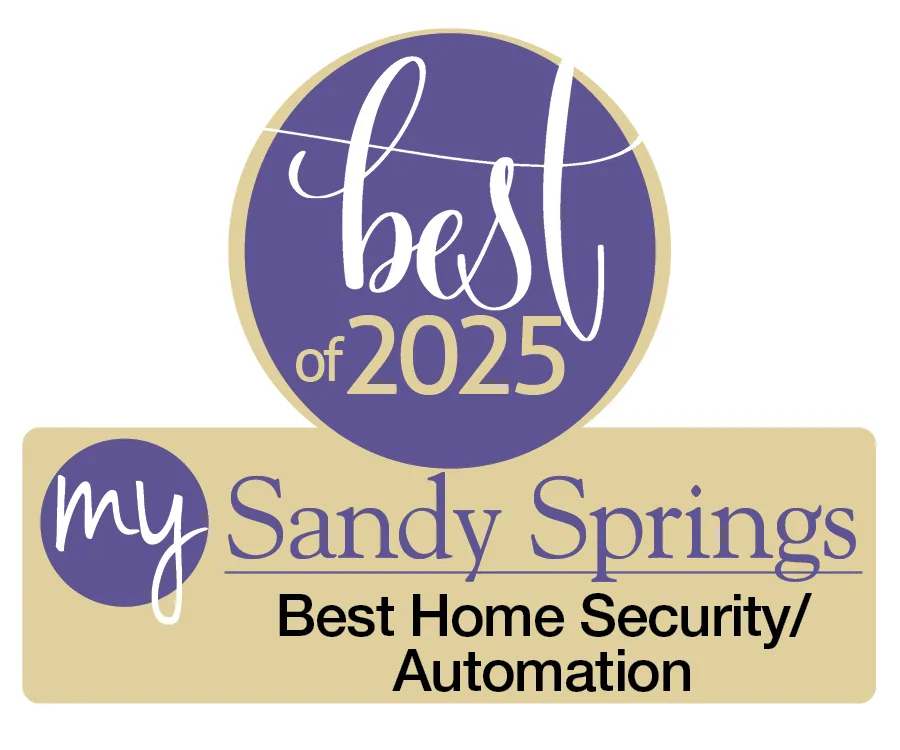Home automation refers to the use of technology to control and automate various household tasks and functions. It involves the integration of devices and systems within a home to provide homeowners with increased convenience, comfort, security, and energy efficiency. Home automation systems typically consist of a central hub or controller that connects to various smart devices and appliances throughout the home.
The central hub acts as the brain of the system, receiving and processing commands from the homeowner and sending instructions to the connected devices. This communication is usually done wirelessly through Wi-Fi or Bluetooth technology. Home automation systems can be controlled through mobile apps, web interfaces, or voice assistants.
Key Takeaways
- Home automation allows you to control various aspects of your home remotely through smart devices.
- Benefits of home automation include increased convenience, comfort, energy efficiency, and security.
- Smart home devices such as smart thermostats, lighting systems, and voice assistants are popular tools for managing your home remotely.
- Home automation can enhance your property’s security and surveillance through features such as smart locks and cameras.
- Energy efficiency can be improved through automated systems that regulate heating, cooling, and lighting.
Benefits of Home Automation: Why You Should Consider it for Your Property
a) Increased security: One of the key benefits of home automation is enhanced security. With a home automation system, you can remotely monitor your property through smart cameras and motion sensors. You can receive real-time alerts on your smartphone if any suspicious activity is detected. Additionally, you can automate your lights and blinds to create the illusion that someone is home even when you’re away, deterring potential burglars.
b) Energy efficiency: Home automation can help you save money on utilities by optimizing energy usage. Smart thermostats allow you to control your heating and cooling systems remotely and set schedules based on your preferences. Energy monitoring systems provide real-time data on your energy consumption, allowing you to identify areas where you can reduce waste. Smart lighting systems can be programmed to turn off when no one is in a room or adjust brightness levels based on natural light.
c) Convenience and comfort: Home automation brings convenience and comfort to your daily life. With voice assistants like Amazon Alexa or Google Assistant, you can control various devices in your home with simple voice commands. You can create automated routines that turn on lights, adjust temperature settings, and play music when you wake up or come home. Remote control capabilities allow you to operate appliances and devices from anywhere, saving you time and effort.
d) Entertainment enhancement: Home automation can enhance your entertainment experience. Smart TVs can be integrated with your home automation system, allowing you to control them using your smartphone or voice commands. Surround sound systems can be synchronized with your TV or music streaming services for a more immersive audio experience. Automated lighting can create the perfect ambiance for movie nights or parties.
Smart Home Devices: The Top Tools for Managing Your Home Remotely
a) Smart thermostats: Smart thermostats, such as the Nest Learning Thermostat or Ecobee, allow you to control your heating and cooling systems remotely. You can adjust temperature settings, set schedules, and monitor energy usage through mobile apps or web interfaces. Some smart thermostats also have built-in sensors that detect when you’re away from home and automatically adjust the temperature to save energy.
b) Smart lighting: Smart lighting systems, like Philips Hue or Lutron Caseta, enable you to control your lights remotely and create customized lighting scenes. You can turn lights on or off, dim them, or change colors using your smartphone or voice commands. Some smart lighting systems also have motion sensors that automatically turn on lights when someone enters a room and turn them off when no motion is detected.
c) Smart locks: Smart locks, such as August or Schlage Connect, provide keyless entry to your home. You can lock or unlock your doors remotely using your smartphone or assign temporary access codes to family members or guests. Some smart locks also have built-in cameras that capture images or videos of anyone who approaches your door.
d) Smart speakers: Smart speakers, like Amazon Echo or Google Home, act as voice assistants and central hubs for your home automation system. They allow you to control various devices using voice commands, play music, answer questions, and provide information. Smart speakers can also be integrated with other smart devices to create a seamless and hands-free experience.
Security and Surveillance: How Home Automation Can Keep Your Property Safe
a) Smart cameras: Smart cameras, such as Ring or Arlo, provide video surveillance of your property. They can be placed indoors or outdoors and allow you to monitor your home remotely through mobile apps or web interfaces. Some smart cameras have motion detection capabilities and send real-time alerts to your smartphone when activity is detected.
b) Motion sensors: Motion sensors are an essential part of a home automation security system. They can be placed in strategic locations around your home and detect any movement. When motion is detected, the sensors can trigger alarms, turn on lights, or send notifications to your smartphone.
c) Alarm systems: Home automation systems can integrate with alarm systems to provide enhanced security. When an intrusion is detected, the alarm system can sound a loud siren, send alerts to your smartphone, and even contact emergency services if necessary.
d) Remote monitoring: With home automation, you can remotely monitor your property in real-time. You can view live video feeds from your smart cameras, check the status of your alarm system, and receive notifications on your smartphone if any security breaches occur. This gives you peace of mind knowing that you can keep an eye on your home even when you’re not there.
Energy Efficiency: How Home Automation Can Help You Save Money on Utilities
a) Smart thermostats: Smart thermostats are one of the most effective ways to save energy and reduce utility bills. They allow you to control your heating and cooling systems remotely and set schedules based on your preferences. By adjusting temperature settings when you’re away or asleep, you can avoid wasting energy and save money.
b) Energy monitoring systems: Energy monitoring systems provide real-time data on your energy consumption. They can track how much energy each device or appliance in your home is using and provide insights on where you can make improvements. By identifying energy-hungry devices and adjusting your usage habits, you can significantly reduce your energy consumption and lower your utility bills.
c) Smart lighting: Smart lighting systems can help you save energy by automatically turning off lights when no one is in a room or adjusting brightness levels based on natural light. You can also set schedules for your lights to turn on or off at specific times, ensuring that they’re not left on unnecessarily.
Convenience and Comfort: How Home Automation Can Simplify Your Life
a) Voice assistants: Voice assistants, such as Amazon Alexa or Google Assistant, make controlling your home automation system effortless. You can use simple voice commands to control devices, play music, set reminders, answer questions, and more. Voice assistants can also be integrated with other smart devices to create a seamless and hands-free experience.
b) Automated routines: Home automation systems allow you to create automated routines that perform multiple tasks with a single command. For example, you can create a “Good Morning” routine that turns on the lights, adjusts the temperature, and plays your favorite music when you wake up. Automated routines save you time and effort by eliminating the need to manually control each device.
c) Remote control: With home automation, you can control various devices in your home remotely. Whether you’re at work or on vacation, you can use your smartphone or voice commands to turn on lights, adjust temperature settings, lock doors, or even start appliances. Remote control capabilities provide convenience and peace of mind knowing that you have full control over your home no matter where you are.
Entertainment Systems: How Home Automation Can Enhance Your Home Theater Experience
a) Smart TVs: Smart TVs can be integrated with your home automation system, allowing you to control them using your smartphone or voice commands. You can change channels, adjust volume, and even launch streaming apps without the need for a separate remote control. Some smart TVs also have built-in voice assistants, making it even easier to control your entertainment system.
b) Surround sound systems: Home automation can synchronize your surround sound system with your TV or music streaming services for a more immersive audio experience. You can create customized audio scenes that adjust volume levels and speaker configurations based on your preferences. With a single command, you can transform your living room into a home theater.
c) Automated lighting: Automated lighting can enhance your home theater experience by creating the perfect ambiance. You can program your lights to dim or change colors when you start watching a movie, creating a cinematic atmosphere. Automated lighting can also be synchronized with your surround sound system to create dynamic lighting effects that match the audio.
Remote Access: How to Control Your Home Automation System from Anywhere
a) Mobile apps: Most home automation systems come with mobile apps that allow you to control your devices remotely. These apps provide a user-friendly interface where you can view and manage all connected devices, set schedules, create automated routines, and receive notifications. Mobile apps are available for both iOS and Android devices.
b) Web interfaces: In addition to mobile apps, many home automation systems also offer web interfaces that can be accessed through any web browser. Web interfaces provide similar functionality to mobile apps, allowing you to control devices, set schedules, and monitor your home remotely. This is particularly useful if you don’t have access to your smartphone or prefer using a larger screen.
c) Voice assistants: Voice assistants like Amazon Alexa or Google Assistant can be used to control your home automation system using voice commands. By integrating your voice assistant with your home automation system, you can control devices, set routines, and receive information without the need for a smartphone or computer.
Installation and Maintenance: Tips for Setting Up and Maintaining Your Home Automation System
a) Choosing the right devices: When setting up a home automation system, it’s important to choose devices that are compatible with each other and with your chosen central hub or controller. Research different brands and models to ensure that they can communicate seamlessly and provide the functionality you need.
b) Proper installation: Proper installation is crucial for the optimal performance of your home automation system. Follow the manufacturer’s instructions carefully and consider hiring a professional if you’re not confident in your technical skills. Ensure that all devices are connected securely and that they have a stable internet connection.
c) Regular maintenance: Regular maintenance is essential to keep your home automation system running smoothly. Check for software updates for your devices and central hub regularly and install them as soon as they become available. Test your devices periodically to ensure that they’re functioning correctly and replace any faulty or outdated components.
Future of Home Automation: What to Expect in the Coming Years
a) Increased integration: In the future, we can expect to see even greater integration between different smart devices and systems. This means that home automation systems will become more seamless and interconnected, allowing for more advanced automation and control.
b) More advanced AI: Artificial intelligence (AI) will play a significant role in the future of home automation. AI-powered voice assistants will become smarter and more intuitive, understanding natural language commands and adapting to individual preferences. AI algorithms will also be used to optimize energy usage, predict user behavior, and enhance security features.
c) Greater energy efficiency: As technology advances, home automation systems will become even more energy-efficient. Smart devices will be able to communicate with each other to optimize energy usage based on real-time data and user preferences. This will result in further reductions in energy consumption and utility bills.
d) Enhanced security features: Home automation systems will continue to evolve to provide even greater security features. We can expect to see advancements in facial recognition technology, biometric authentication, and advanced encryption methods. This will ensure that our homes are protected from unauthorized access and cyber threats.
Conclusion: Recap of the benefits of home automation and encouragement to consider implementing it in your own home.
In conclusion, home automation offers numerous benefits that can greatly enhance your daily life. From increased security and energy efficiency to convenience and comfort, home automation systems provide homeowners with greater control and peace of mind. With the wide range of smart devices available, you can customize your home automation system to meet your specific needs and preferences.
Whether you’re looking to improve security, save money on utilities, simplify your daily routines, or enhance your entertainment experience, home automation has something to offer. With advancements in technology, the future of home automation looks promising, with increased integration, more advanced AI, greater energy efficiency, and enhanced security features on the horizon.
If you haven’t already considered implementing a home automation system in your own home, now is the time to do so. Take advantage of the benefits it offers and enjoy a more secure, efficient, and comfortable living environment. With the right devices, proper installation, and regular maintenance, you can transform your home into a smart and connected haven.
FAQs
What is home automation?
Home automation refers to the use of technology to control and automate various household appliances and systems, such as lighting, heating, ventilation, air conditioning, security, and entertainment.
What are the benefits of home automation?
Home automation offers several benefits, including increased convenience, energy efficiency, cost savings, improved security, and peace of mind. It allows you to control and monitor your home remotely, which can be especially useful when you’re away from home.
What are some examples of home automation devices?
Some examples of home automation devices include smart thermostats, smart lighting systems, smart locks, smart security cameras, smart speakers, and smart home hubs.
How does home automation work?
Home automation works by connecting various devices and systems in your home to a central hub or controller, which can be accessed and controlled remotely using a smartphone, tablet, or computer. The devices communicate with each other using wireless technologies such as Wi-Fi, Bluetooth, or Zigbee.
Is home automation expensive?
The cost of home automation varies depending on the devices and systems you choose, as well as the complexity of the installation. However, many home automation devices are now more affordable than ever, and can provide significant cost savings in the long run by reducing energy consumption and improving home security.
Is home automation secure?
Home automation can be secure if you take the necessary precautions, such as using strong passwords, keeping your software up to date, and using devices from reputable manufacturers. It’s also important to secure your home network and Wi-Fi router to prevent unauthorized access.











